Normally in RO infantry have panzerfausts as a great way of dealing with enemy armor. However, the panzerfaust and panzerschreck entered production in 1943, the year after the battle. So I'm wondering if infantry will have suitable weapons to counter arty other than satchel charges and AT rifles. Molotov cocktails and static tank turrets, perhaps? Captured German magnetic grenades?
You are using an out of date browser. It may not display this or other websites correctly.
You should upgrade or use an alternative browser.
You should upgrade or use an alternative browser.
Anti-Tank Weapons
- Thread starter NightriderAOF
- Start date
My suggestion:
Russians: PTRD-41, PTRS-41, RPG-40 AT grenade and satchel charge
-PTRD-41 would be the regular AT weapon, while the PTRS-41 and RPG-40 would be exclusive for heroes. The heroes would choose between having the PTRS-41 instead of the PTRD or having the RPG-40 as an addition(no PTRS+RPG).
Germans: PzB 39, the Hafthohlladung magnetic grenade, that six-headed Stielhandgranate and satchel charge
-PzB 39 would be the regular AT weapon, while the magnetic grenade and the 6xStielhandgranate would be exclusive for heroes as an addition.
Satchel charges only for engineers
Russians: PTRD-41, PTRS-41, RPG-40 AT grenade and satchel charge
-PTRD-41 would be the regular AT weapon, while the PTRS-41 and RPG-40 would be exclusive for heroes. The heroes would choose between having the PTRS-41 instead of the PTRD or having the RPG-40 as an addition(no PTRS+RPG).
Germans: PzB 39, the Hafthohlladung magnetic grenade, that six-headed Stielhandgranate and satchel charge
-PzB 39 would be the regular AT weapon, while the magnetic grenade and the 6xStielhandgranate would be exclusive for heroes as an addition.
Satchel charges only for engineers
Upvote
0
They had anti-tank rifles.
Well yeah, there are AT rifles in RO as well, but nothing is quite as effective as a panzerfaust when it comes to ambushing a tank as infantry.
Upvote
0
Let's wait until we get confirmed vehicles before having this discussion ay?
I couldn't have said it better
Upvote
0
It's a interesting topic Nightrider, and so we can discuss it without the NKVD comments just fine. 
Nezzer's list is good, and to this add the Molotov cocktail. Mikhail Panikakha became a well known hero during the Stalingrad fighting for his destruction of a German tank after he was already on fire when his first Molotov exploded over his body. Ilya Kaplanov was another who threw himself at an enemy tank after being engulfed in fire.
The Molotov's were incredibly dangerous (and fragile in battle) to use.
Nezzer's list is good, and to this add the Molotov cocktail. Mikhail Panikakha became a well known hero during the Stalingrad fighting for his destruction of a German tank after he was already on fire when his first Molotov exploded over his body. Ilya Kaplanov was another who threw himself at an enemy tank after being engulfed in fire.
The Molotov's were incredibly dangerous (and fragile in battle) to use.
Upvote
0
were molotovs still effective however by 1942? I do know that early tanks were vulnerable but that later tanks certainly were not. However i guess molotovs will work wonderfully vs half tracks.
Upvote
0
My suggestion:
Russians: PTRD-41, PTRS-41, RPG-40 AT grenade and satchel charge
-PTRD-41 would be the regular AT weapon, while the PTRS-41 and RPG-40 would be exclusive for heroes. The heroes would choose between having the PTRS-41 instead of the PTRD or having the RPG-40 as an addition(no PTRS+RPG).
Germans: PzB 39, the Hafthohlladung magnetic grenade, that six-headed Stielhandgranate and satchel charge
-PzB 39 would be the regular AT weapon, while the magnetic grenade and the 6xStielhandgranate would be exclusive for heroes as an addition.
Satchel charges only for engineers
Agree with that post.
I'd like to add:
- When AT rifles would be available only for AT soldier class, AT grenades would available for other classes but in limited numbers (let's say 3x2 grenades, so not everyone can have them)
Upvote
0
Yes, and even the newest to the ranks, the Tiger had vulnerability to Molotov cocktails:were molotovs still effective however by 1942?
VULNERABILITY OF THE PZ. KPFW. VI
A tank is such a complicated weapon, with its many movable parts and its elaborate mechanism, that it is particularly valuable to know its points of greatest vulnerability. Recently the Soviet Artillery Journal published a number of practical suggestions, based on extensive combat experience, regarding the vulnerability of the Tiger. All weapons now used for destroying German tanks — antitank guns and rifles, caliber .50 heavy machine guns, antitank grenades, and Molotov cocktails — are effective against the Pz. Kpfw. VI.
1. Suspension System. — The mobility of tanks depends upon the proper functioning of the suspension parts: the sprocket (small driving wheel), the idler (small wheel in the rear), the wheels, and the tracks. All these parts are vulnerable to shells of all calibers. The sprocket is especially vulnerable. Fire armor-piercing shells and high-explosive shells at the sprocket, idler, and tracks. Fire at the wheels with high-explosive shells. Use antitank grenades, antitank mines, and movable antitank mines against the suspension parts. Attach three or four mines to a board. Place the board wherever tanks are expected to pass. Camouflage the board and yourself. As a tank passes by, pull the board in the proper direction and place it under the track of the tank. [A German source states that this method was successfully used on roads and road crossings in Russia, and that it still is taught in tank combat courses for infantry. The mine is called the Scharniermine (pivot mine). It consists of a stout length of board, 8 inches wide by 2 inches thick, and cut to a length dependent on the width of the road to be blocked. A hole is bored at one end, through which a spike or bayonet can be driven into the ground, thus providing a pivot for the board. A hook is fastened to the other end of the board, and a rope is tied to the hook, as shown in Figure 3. Tellermines are secured to the top of the board.
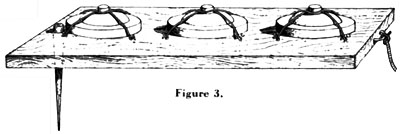
One man can operate this mine. After the board has been fastened down at one end with the spike (in emergencies, a bayonet) and a rope tied to the hook at the other end, the board is laid along the side of the road. On the opposite side of the road, a man is posted in a narrow slit trench. He holds the other end of the rope. When a tank approaches, the tank hunter waits until it is close enough to the pivoted board, and, at the very last moment, he pulls the free end of the board across the road. The rope and slit trench must be well camouflaged. A good deal of emphasis is placed on this point.]
2. Side Armor Plates. — There are two armor plates on each side of the tank. The lower plate is partly covered by the wheels. This plate protects the engine and the gasoline tanks, which are located in the rear of the hull — directly beyond and over the two rear wheels. Ammunition is kept in special compartments along the sides of the tank. These compartments are protected by the upper armor plate. Fire armor-piercing shells from 76-, 57-, and 45-mm guns at the upper and lower armor plate. When the gas tanks or ammunition compartments are hit, the vehicle will be set on fire.
3. Rear Armor Plate. — The rear armor plate protects the engine, the gasoline tank, and the radiators. Use antitank guns. Aim at the rear armor plate. When the engine or the gasoline tanks are hit, the tank will halt and will begin to burn.
4. Peepholes, Vision Ports, and Slits. — The main turret has two openings for firing small-arms weapons, and two vision ports. The turret has five observation slits. There are two sighting devices on the roof of the front part of the tank — one for the driver, the other for the gunner. There is also a port with sliding covers in the front armor plate. Use all available weapons for firing at the peepholes, observation ports, vision slits, and the ports for small-arms weapons.
5. Turrets. — The commander's turret is an important and vulnerable target. Fire high-explosive and armor-piercing shells of all calibers at the commander's turret. Throw antitank grenades and incendiary bottles after the turret has been damaged. The tank commander, the turret commander, and the gunner ride in the turret. The tank gun and many mechanical devices are found in the turret. Fire at the turret with 76-, 57-, and 45-mm shells at ranges of 500 yards or less.
6. Tank Armament. — The turret is armed with a gun and a machine gun mounted coaxially. Another machine gun is found in the front part of the hull. It protrudes through the front armor plate, on a ball mount, and is manned by, the radio operator. Concentrate the fire of all weapons on the armament of the tank. Fire with antitank rifles at the ball mount of the hull machine gun.
7. Air Vents and Ventilators. — The air vents and the ventilators are found under the slit-shaped perforations of the roof of the hull, directly behind the turret. Another air vent is located in the front part of the roof, between the two observation ports used by the radio operator and the driver. Use incendiary bottles and antitank grenades to damage the ventilating system.
8. Tank Floor. — When an antitank mine explodes under the tank, the floor of the tank is smashed, and the tank is knocked out of action.
9. Base of Turret. — There is a 10-mm slit going all around the turret, between the base of the turret and the roof of the hull. Fire at the base of the turret with heavy machine guns and antitank guns, to destroy the turret mechanism, and disrupt the field of fire. Fire with high-explosive shells at the base of the turret in order to wreck the roof of the hull and put the tank out of action.
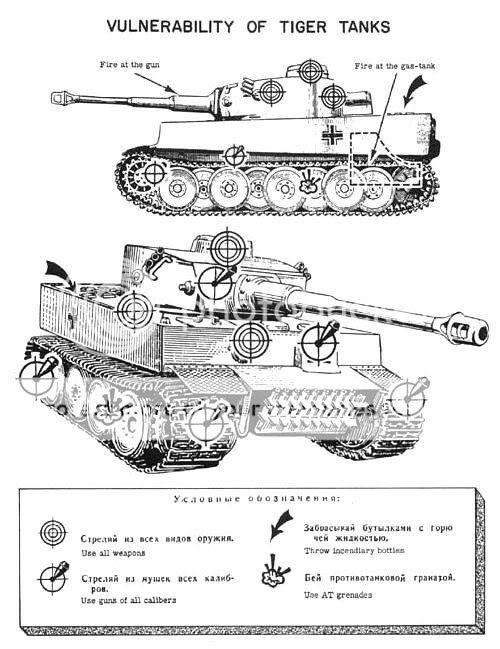
Last edited:
Upvote
0
Let's wait until we get confirmed vehicles before having this discussion ay?
Vehicles are confirmed already.
There's a "Enemy tank spotted" icon on the map in one of the videos.
Upvote
0
Vehicles are confirmed already.
There's a "Enemy tank spotted" icon on the map in one of the videos.
That's not "confirmed" now is it? We seem to be getting waaaaaaay ahead of ourselves recently...
Upvote
0
don't forget s.Pz.B. 41.
:IS2::IS2::IS2:
Well, that would be a rather stationary AT weapon.
Upvote
0
That's not "confirmed" now is it? We seem to be getting waaaaaaay ahead of ourselves recently...
How is not confirmed? Why would they make a totally new map and add "Tank spotted" icon to it if they weren't planning on having tanks?
Upvote
0
For something to be confirmed, it needs not to be speculative.
The found icon is circumstantial evidence of the tanks. The map wasn't a placeholder from ROOST, like the sounds. So I'd say this is beyond speculation.
Besides, isn't this what the ROHOS forum is partly for? Discussing possibilities?
Upvote
0
The more weapons the better (assuming they fit the time period).
They might have made the icons (which are not hard to do), but have decided against finishing/adding vehicles into the final product.
Remember that testicle monster in the early HL2 demo videos? It was not in the final product.
Not say they won't be in, but there is still a chance they might not be in the final game.
The found icon is circumstantial evidence of the tanks. The map wasn't a placeholder from ROOST, like the sounds. So I'd say this is beyond speculation.
Besides, isn't this what the ROHOS forum is partly for? Discussing possibilities?
They might have made the icons (which are not hard to do), but have decided against finishing/adding vehicles into the final product.
Remember that testicle monster in the early HL2 demo videos? It was not in the final product.
Not say they won't be in, but there is still a chance they might not be in the final game.
Upvote
0
Nightrider, these wartime drawings will round out the early-war German tank types vulnerable locations to Molotov cocktail attacks:
VULNERABLE SPOTS FOR INCENDIARY GRENADES ON GERMAN TANKS
In attacking enemy tanks at close quarters with Molotov cocktails or incendiaries, the air intakes are among the most vulnerable points. It is important, therefore, that the location of these intakes and outlets be known, as the flame and fumes of a grenade thrown against an intake while the engine is running will be sucked inside, but if the grenade lands on an outlet, they will be blown clear of the tank.
The best targets are the flat top-plates behind the turret. Side intakes are invariably protected by a vertical baffle. The accompanying sketches show the "soft spots" in German tanks Pz.Kw. 2, 3, and 4.
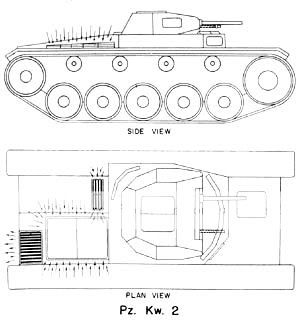
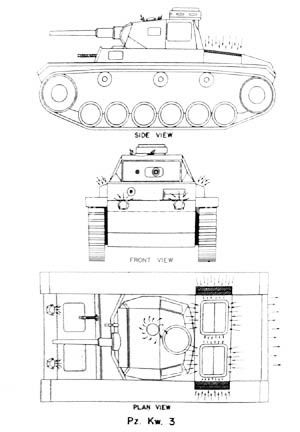
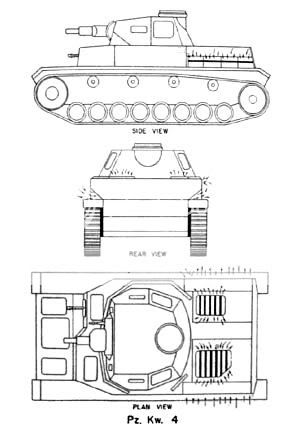
VULNERABLE SPOTS FOR INCENDIARY GRENADES ON GERMAN TANKS
In attacking enemy tanks at close quarters with Molotov cocktails or incendiaries, the air intakes are among the most vulnerable points. It is important, therefore, that the location of these intakes and outlets be known, as the flame and fumes of a grenade thrown against an intake while the engine is running will be sucked inside, but if the grenade lands on an outlet, they will be blown clear of the tank.
The best targets are the flat top-plates behind the turret. Side intakes are invariably protected by a vertical baffle. The accompanying sketches show the "soft spots" in German tanks Pz.Kw. 2, 3, and 4.



Upvote
0

